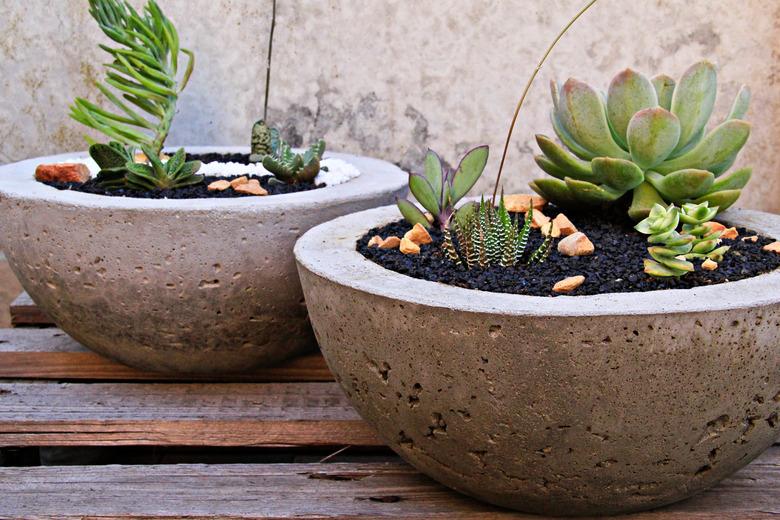How To Glue To Concrete
We may receive a commission on purchases made from links.
When it comes to gluing anything onto concrete, choosing the right type of adhesive is a must. Construction adhesives generally do the job quite well, but even within that category, it's important to read the product specifications. Some aren't for use with glass or stone even though they work on concrete, and some can't handle excessive moisture. In any case, your best bet for finding the ideal concrete glue is a stroll through the construction-adhesive aisle at your favorite hardware or home-improvement store.
Moisture-Activated Polyurethane Adhesives
Moisture-Activated Polyurethane Adhesives
A moisture activated polyurethane adhesive, such as the original Gorilla Glue formula, glues concrete to both porous and nonporous materials. It adheres to concrete, metal, glass, wood, and stone, among other surfaces. Like many adhesives, it doesn't work on every material; this one isn't recommended for polypropylene or polyethylene plastics. A little moisture is necessary for this type of glue to adhere.
Use a damp cloth or a spray bottle to apply moisture to the concrete or to the material being glued to it. Apply a bead of glue to the dry material, then press the items together. Clamp the concrete and the other material together for two hours. If you're gluing objects that are difficult to clamp, such as when reattaching parts of a concrete statue, use a strong painter's tape, bungee cords, or some thick twine instead. Allow a full 24 hours before using the glued materials.
This type of adhesive won't degrade even in rainy outdoor environments, and it holds up well to temperature variations that may occur with seasonal changes. It's also paintable and sandable in case a bead of it squirts out between the glued materials. Though this type of glue expands, it's not designed to fill gaps.
Construction Adhesives for Concrete
Construction Adhesives for Concrete
Construction adhesives are ideal for large or outdoor projects, such as gluing landscape blocks together. If you're gluing stone, brick, or metal to concrete blocks or similar concrete materials, a construction adhesive made for landscape blocks is a great choice. It fills small gaps, works on wet or dry surfaces, and can be applied in most hot and cold weather conditions. Though it holds up to weather, it's not designed for underwater use, such as in part of a backyard pond or water feature.
Using a landscape-block construction adhesive doesn't even require clean or dry surfaces, although it's best to brush off excessive dirt or debris to ensure the glue bonds to the actual concrete. This type of adhesive comes in tubes and requires a caulk gun. Apply a zigzag line of landscape-block adhesive over one of the two project surfaces, then press the materials together. Expect about a 30-minute working time for this type of adhesive in case you need to reposition the materials. It takes up to a week for the glue to fully cure.
Other construction adhesives are applied in much the same manner as landscape-block adhesive, but some have a slightly different formula and may not work on all surfaces. For best results, buy one that's designed to work on both surfaces you're gluing; for instance, some heavy-duty construction adhesives work on most surfaces, but won't hold glass and some types of stone onto concrete. Apply the construction adhesive far enough from the edges of the project pieces so the glue won't squirt out once you join them.
